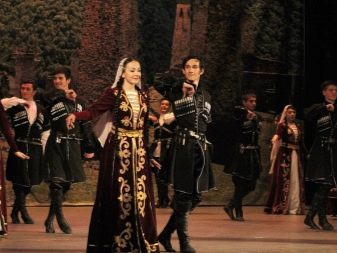Lezginka dance
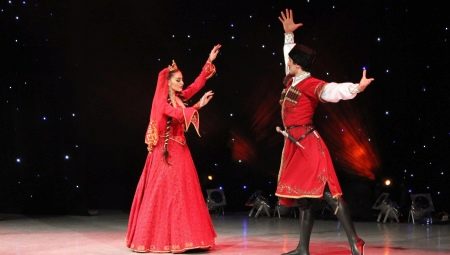
Rhythmic, intense and energetic Lezginka is one of the most beautiful and complex dances in the world. This dance with a stunning history and numerous theories of origin is gaining more and more popularity every year, both among original peoples and in the context of any other nationalities.
Types of dance
In practice, you can find a fairly large number of dance variations. Lezginka can be performed both alone and in pairs, depending on the cultural environment, mentality or preferences of the dancers themselves.
If the lezginka is performed by a couple, the guiding link is always a man who, with the help of dance, expresses his own temperament and unshakable courage. Interestingly, in the case of a paired lezginka, a man cannot take his eyes off his partner. Otherwise, the dance is considered incorrectly performed.


The name of any variety comes from the Caucasian people among whom it is common. Thanks to this, the Lezginka received wide variability based on the internal characteristics of culture and nationality, personifying their originality.
The male core is the fundamental element of the dance. Character manifests itself in every dance movement, regardless of the characteristics of the external environment or interfering factors. Whatever variety is performed, a man must show the woman and everyone around him the steadfastness of character and the size of his own personality.
Any kind of lezginka is a unique dance that allows you to quickly and effectively demonstrate strength and agility, while not forgetting about such important features of the human personality as restraint and the manifestation of high feelings.
Excessive randomness or eroticism in movements is contraindicated for a man who performs this dance - all actions are performed clearly and strictly according to the rules.
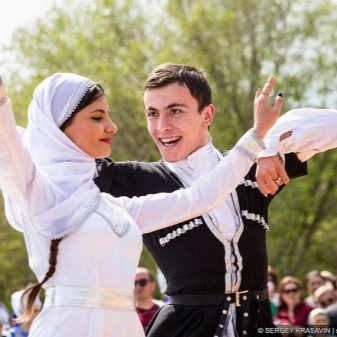
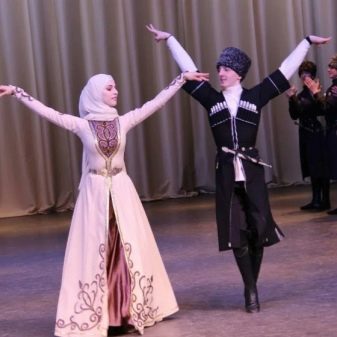
A distinctive feature of the paired variety is the show to the public of a tacit and restrained acquaintance between a man and a woman. In turn, collective dances are aimed at demonstrating strength, agility and endurance. The first dancers were able to perform lezginka for a long time - up to several hours.
In historical terms, Lezginka is a collective name for any variety of dance art inherent in the mountainous Caucasian peoples. According to one of the popular theories, dance got its definition thanks to the ancient people called Lezgins.
Regardless of the variety performed, certain images are used in the lezginka, reflecting the cultural heritage of a particular people. Scientists agree that this dance art was often used to popularize the art of mountain peoples, as well as to draw attention to their internal problems.
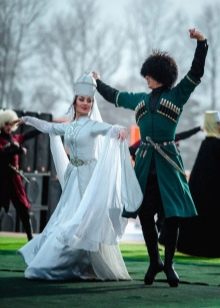
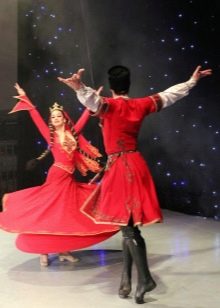
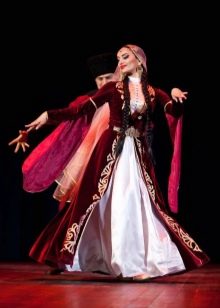
In most cases, the leading image of Lezginka is war, in which firearms have not yet been used. Any dance movement is defined as a separate element. For example, intermittent and variable flexion of the arms outstretched to the full width of the shoulders is an image of archery.
The main role of a man in dance is to create the image of an "eagle" through intense and dynamic movements, which are replaced by a slow pace. At the same time, a woman plays the role of a "swan" - refined, capable of captivating a person with smooth movements and graceful posture.
A distinctive feature of any type of lezginka from other dances is the obligatory increase in the tempo of the woman after the man. According to numerous historians and specialists in the field of mountain peoples, such an element is a sign that the female half always obeys and serves the male, regardless of context or action.
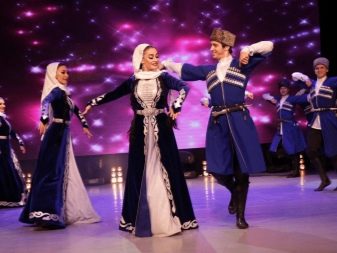
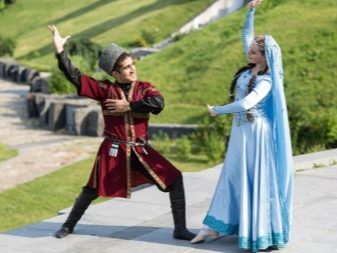
Chechen
The classical Chechen lezginka is the most "hot", energetic and passionate kind of dance. Its peculiarity is the wide distribution of the type in the context of execution by both a man and a woman. The Chechen type is rarely performed alone.
An equally important feature of this type is that the dance is performed exclusively with the feet, while the hands are not involved in any way.
The Chechen variety is considered one of the most popular variations, which is why many historians and specialists call it classic or original.
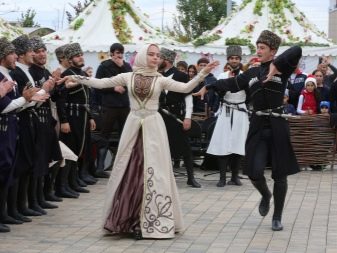
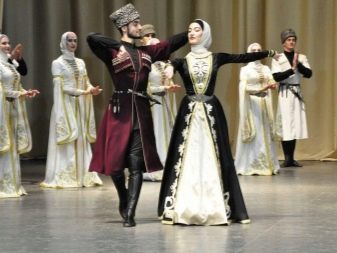
Ossetian
Unlike the Chechen variety, the Ossetian lezginka is performed more tenderly, calmer and more melodic. Due to this feature, this type is often performed by women. If there is a man in the dance, the lezginka radically changes the dance character towards a passionate and sensual performance.
Many experts consider the Ossetian lezginka to be one of the lightest varieties. It is great for initial learning for children or adults who wish to master the skill of energetic and virtuoso dance.

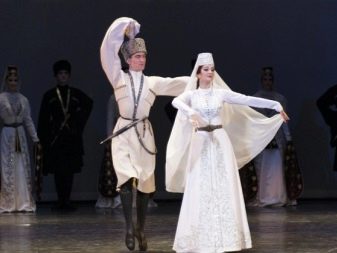
Dagestan
A distinctive characteristic of the Dagestan variety of dance is the performance of lezginka accompanied by live musical instruments. Most often, the so-called zurna is used for this - a wooden tube that looks like a bagpipe.
The Dagestan type of dance can be performed in a bent position - there are usually no strict rules in this variety. Due to this feature, the variety is considered dynamic and variable.
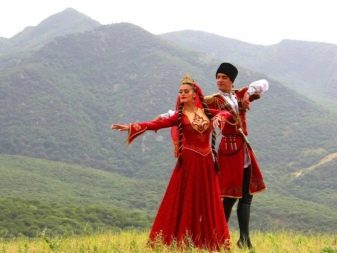
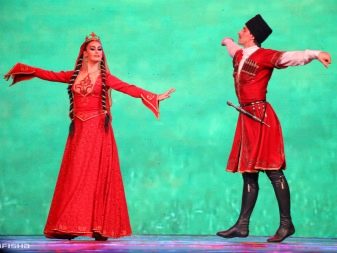
Georgian
Despite the absence of obvious features in the Georgian variety of dance, for this type of Lezginka there is still a distinctive feature by which the dance can be quickly recognized. The Georgian type is characterized by more daring and harsh movements, as well as a fast pace of musical accompaniment.
Unlike the Dagestan dance, this variety can be performed using live music or through pre-recorded compositions on a digital device. The Georgian type also has a more even and stable posture.

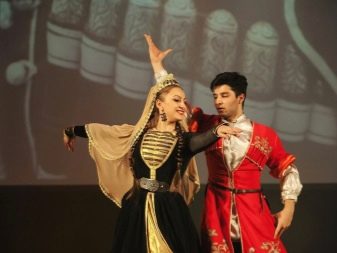
Other
In addition to the varieties described above, there are a fairly large number of types that are less known and common in dance practice. Of the additional variations of lezginka, it is worth noting such as:
- Dargin;
- Ingush;
- Kumyk;
- Circassian;
- Talysh;
- Avar;
- Abkhazian,
- Adyghe.


A wide variety of dance types is due to the fact that Lezginka is a unique dance that was created on the basis of folk culture and traditions.
Consequently, the above types received their own national names.
How to learn to dance?
Lezginka is a fiery dance that is used throughout the different peoples of the Caucasus. Most often it is used in Dagestan weddings, in fact, being a mandatory attribute of the celebration. In this case, the Lezginka is understood by the Dagestanis as a special ceremony that can improve the well-being of the family and make it happier.
Due to the high popularity of dance, many people are often interested in the question of how you can learn to dance lezginka from scratch. Despite the fact that there is an opinion in society that it is impossible to correctly and effectively practice this dance, you can still master its basic elements without problems at home.

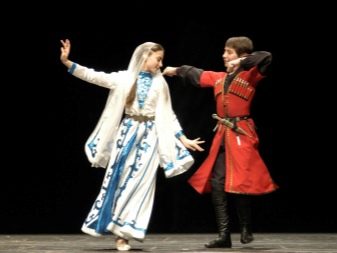
The main points to remember when studying Caucasian dance.
- To learn Lezginka at home, it is important to understand that only lessons for beginners presented in video format are the only way to success. As many years of practice show, it is impossible to learn a complex dance based on a textual description of movements.
- This dance art is rightfully considered unusual - it is forbidden to perform lezginka with a cold heart, insensibility or a too strict mind. The dancer must possess at least the basic attributes of acting, which will allow in practice to express the required amount of feelings and emotions. It is also important to have incendiary music and energetic pace, which symbolize the hot eastern blood.
- Contrary to popular belief, learning the art of dance for boys or girls is an equally difficult task. Each floor performs its own part of the lezginka, which complement each other. It should be remembered, however, that men's and women's movements are very different.
- A particularly important factor in a successful dance is having loose and comfortable clothing. It is recommended that you do a few simple warm-up exercises before exercising, which will greatly reduce the chance of sprains or bruises.

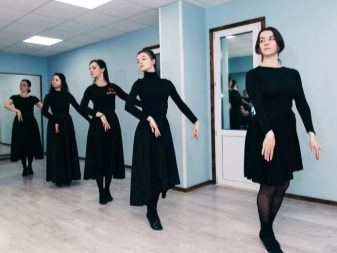
The most effective way to learn Lezginka is to enroll in specialized courses or start attending a dance school. Similar institutions can be found for both children and adults - there is usually no age limit.
Before training, it is also necessary to learn that the lezginka is a unique dance, the main element of which is high-energy and dynamic movements.
Therefore, a person should be prepared for grueling workouts, intense physical exertion and fatigue.
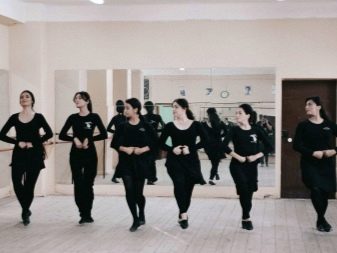

It is recommended to train exclusively with music. This will allow you to better understand the rhythm of the dance, plunge into the oriental atmosphere and improve your psychological state. Dance masters strictly prohibit eating anything 1.5-2 hours before practice before practice.
Girls are advised to put their hair in a bun in advance to avoid awkward movements or any other difficulties observed during the dance. Many experts also advise taking short breaks during which you can drink a small amount of water.
Lezginka is a spectacular dance, which must be approached exclusively with a good and pleasant mood. This dance art does not tolerate laziness or apathy - only passion and energy, which are quickly replaced by the will to live and self-expression.
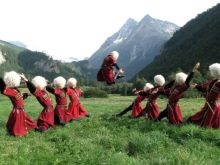
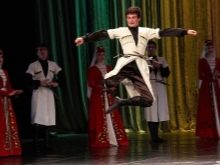
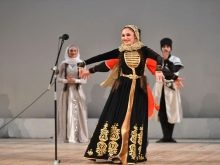
Learning to dance with a long history follows small steps. Don't be discouraged if at first nothing works. Only constant training and healthy motivation are the basic rules of success. According to the oriental masters of complex dance art, it follows that lezginka is the path to personal perfection and the development of fortitude.
In order for the teaching material to be assimilated much easier and more efficiently, it is recommended to begin with dancing to slow and calm music. This will avoid most of the mistakes that beginner dancers often make.
And also remember that the movements performed by the hands are as important as the movements of the legs. The gradual development of coordination and fine motor skills will allow you to achieve high success in the old and well-known dance.
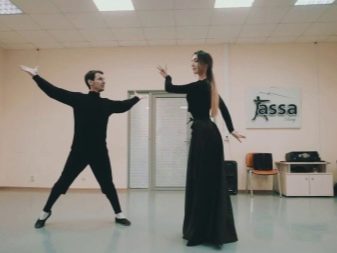

With constant practice, a person is able to effectively develop a sense of pace, sharpness, balance, as well as improve muscles and general health. According to some scientists, it is the healthy mind and physical strength that develop as a result of the frequent practice of Lezginka that is the main reason why the eastern peoples have always been distinguished by courage, bravery and endurance.
During the performance of the dance, it is important to maintain constant eye contact between partners. Since in this dance practice any physical interaction between a woman and a man is prohibited, the eyes of the dancers are what conveys the internal relationship of the two sexes.
It is worth noting that in modern dance schools, many choreographers require students to keep smiling while dancing.
Thus, the main idea of the paired version of Lezginka is supported - the absence of evil intentions, friendliness, loyalty and openness to each other.
